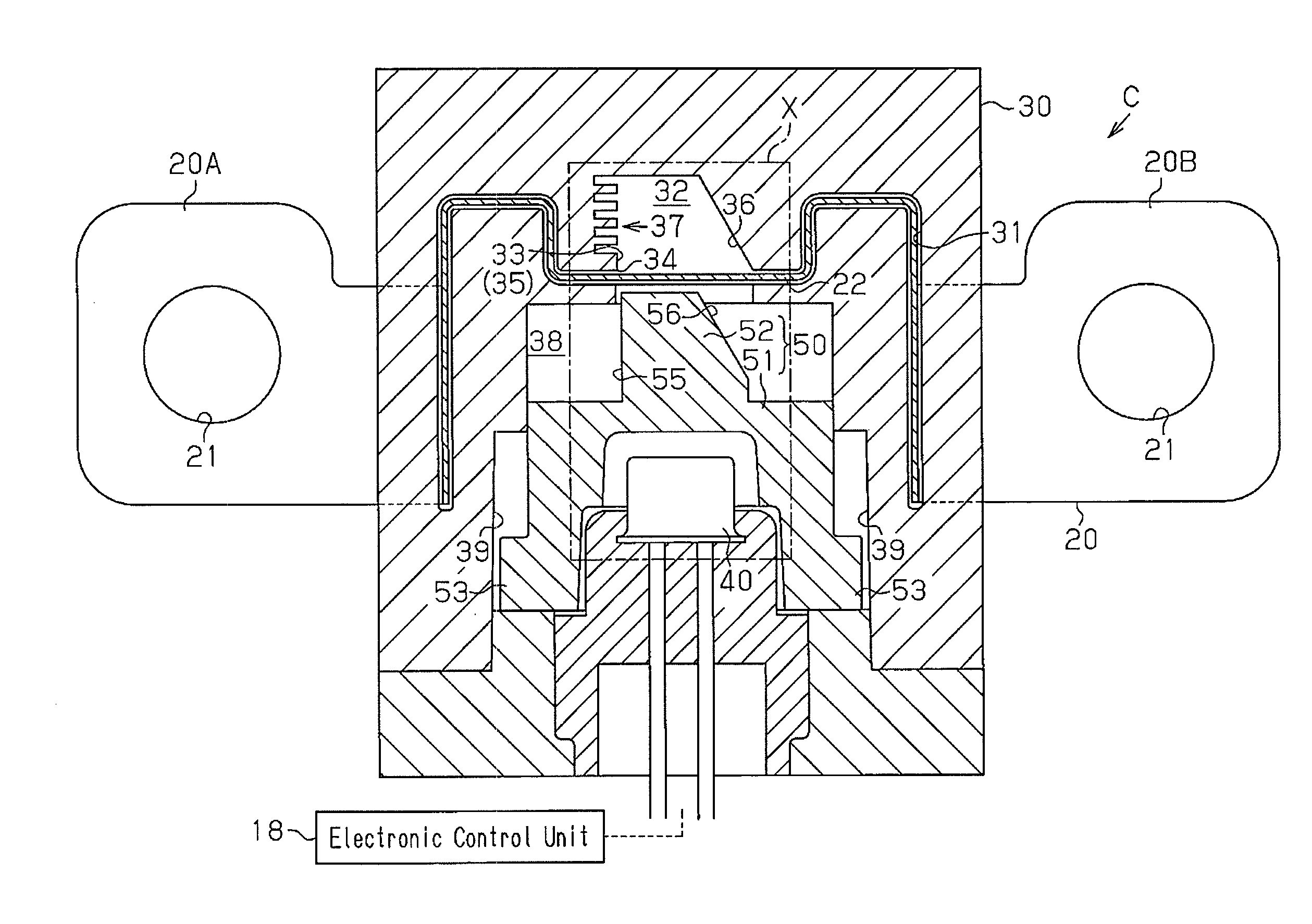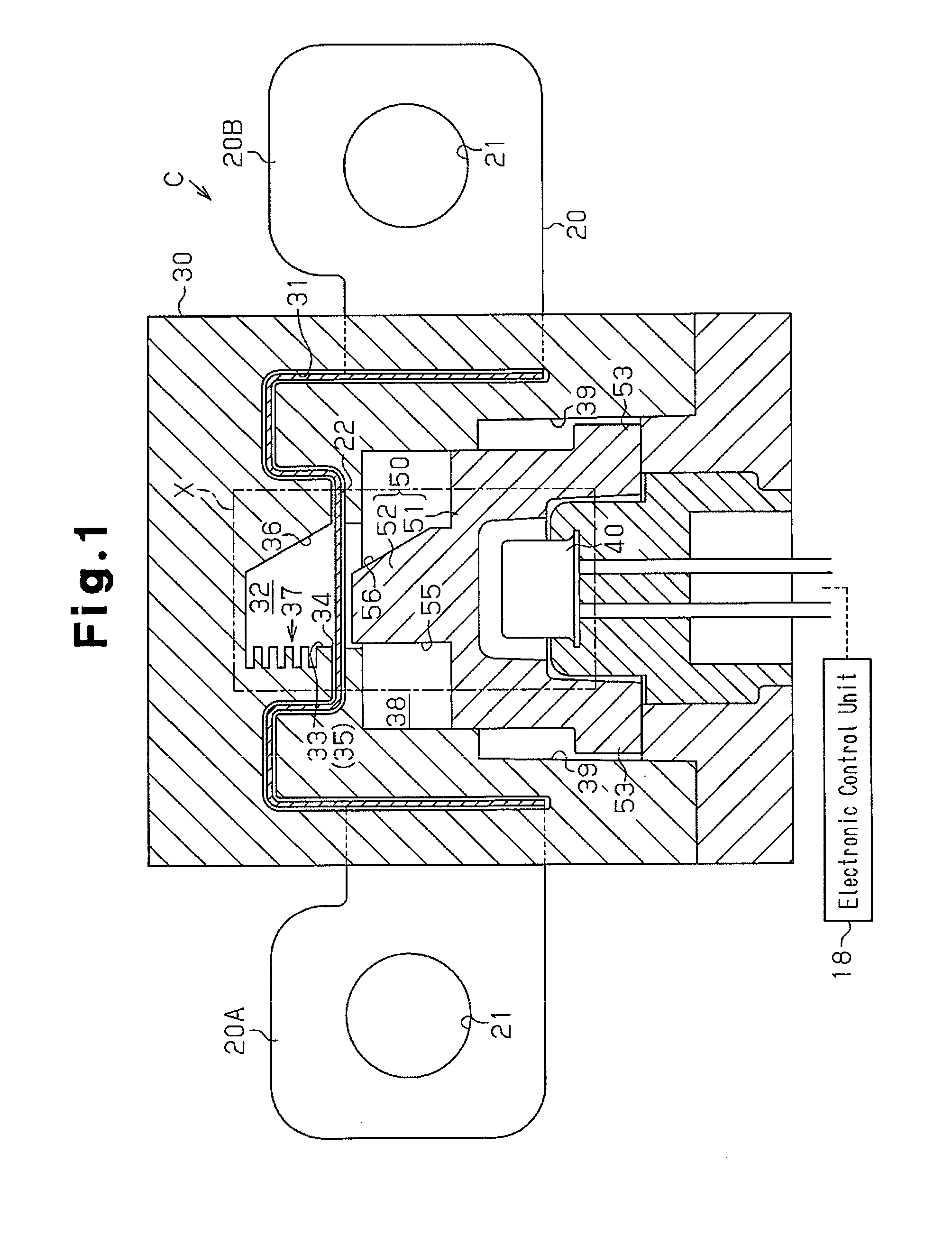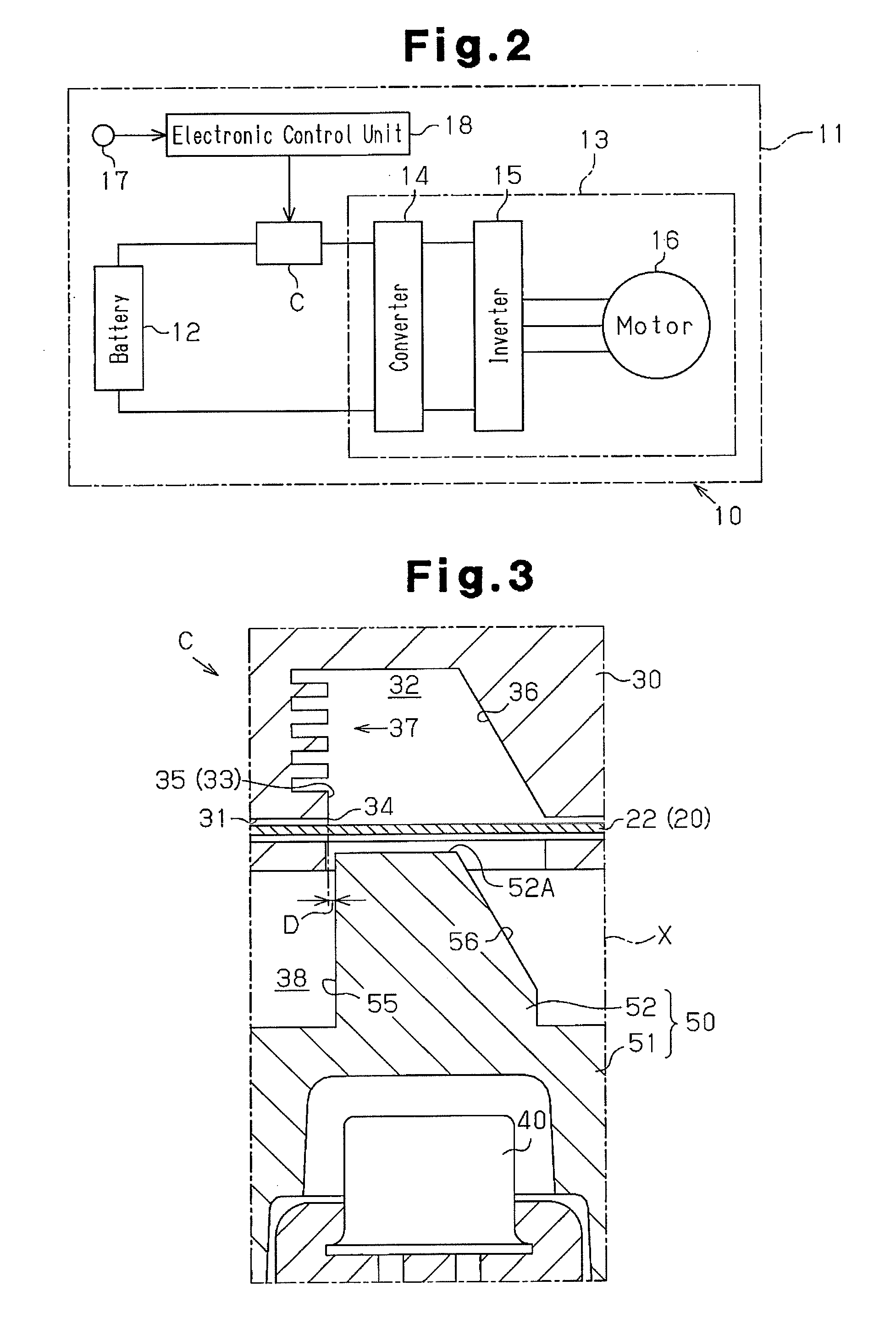Conduction breaking device
- Summary
- Abstract
- Description
- Claims
- Application Information
AI Technical Summary
Benefits of technology
Problems solved by technology
Method used
Image
Examples
first embodiment
[0023]A conduction breaking device C according to a first embodiment of the present invention will be described below with reference to FIGS. 1 to 4.
[0024]FIG. 2 illustrates an electric circuit 11 to which the conduction breaking device C according to the first embodiment is applied. The electric circuit 11 includes a pair of devices, which are a storage battery 12 and an electric device 13. In the electric circuit 11, the electric device 13 is operated by DC electricity supplied from the storage battery 12. The electric device 13 is configured by a converter 14, which increases the voltage of electricity input from the storage battery 12 and outputs the increased voltage, an inverter 15, which converts DC electricity input from the converter 14 into AC electricity suitable for driving a motor and outputs the AC electricity, and a motor 16, which is driven by the AC electricity output from the inverter 15.
[0025]The electric circuit 11 is mounted on a vehicle 10. When the vehicle 10 ...
second embodiment
[0061]A conduction breaking device C according to a second embodiment of the present invention will be described below with reference to FIG. 5 and FIG. 6.
[0062]The second embodiment is different from the first embodiment in the structure for extinguishing an arc occurring between the cut ends 23 and 24 inside the arc-extinguishing chamber 32.
[0063]According to the second embodiment, the entire inner walls of the arc-extinguishing chamber 32 and the entire cutting member 50 are made of a material having a thermal conductivity of 0.5 W / (m·K) or more. Thus, for the inner walls of the arc-extinguishing chamber 32 and the cutting member 50, the area that at least contains a position that the cut end 24 of the first cut piece approaches and a position that the cut end 23 of the second cut piece approaches at the cutting of the conductive body 20 is made of the above material. A general-purpose plastic material mixed with a filler may be used for the above material. The uneven portion 37 ...
third embodiment
[0070]A conduction breaking device C according to a third embodiment of the present invention will be described below with reference to FIG. 7.
[0071]The third embodiment is different from the first and second embodiments in the structure for extinguishing an arc between the cut ends 23 and 24 in the arc-extinguishing chamber 32.
[0072]According to the third embodiment, the entire inner walls of the arc-extinguishing chamber 32 and the entire cutting member 50 are made of a plastic material that generates ablation gas due to an arc occurring between the cut ends 23 and 24. Thus, for the cutting member 50 (the blade 52), an area A1 between a position that the cut end 23 of the second cut piece approaches and a position that the cut end 24 of the first cut piece approaches at the cutting of the breakable portion 22 is made of the above plastic material. For the arc-extinguishing chamber 32, an area A2 between a position that the cut end 23 of the second cut piece approaches and a positi...
PUM
 Login to View More
Login to View More Abstract
Description
Claims
Application Information
 Login to View More
Login to View More - R&D
- Intellectual Property
- Life Sciences
- Materials
- Tech Scout
- Unparalleled Data Quality
- Higher Quality Content
- 60% Fewer Hallucinations
Browse by: Latest US Patents, China's latest patents, Technical Efficacy Thesaurus, Application Domain, Technology Topic, Popular Technical Reports.
© 2025 PatSnap. All rights reserved.Legal|Privacy policy|Modern Slavery Act Transparency Statement|Sitemap|About US| Contact US: help@patsnap.com



